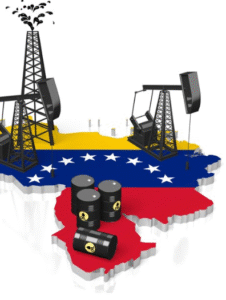$XOM $CVX $BTC
#OilMarket #BrentCrude #Trump2024 #KamalaHarris #ElectionImpact #OilPrices #WallStreet #CommodityTrading #EnergySector #USOilProduction #OPEC #EconomicPolicy
Oil markets saw significant volatility during Wednesday’s trading session, as Brent crude prices for January deliveries dipped sharply, only to recover later in the day. The primary catalyst for the price fluctuations was Donald Trump’s unexpected victory over Kamala Harris in securing a second term as the leader of the White House. Concerns quickly emerged regarding how Trump’s renewed influence on regulatory frameworks and energy policy might affect oil producers. Under the Biden administration, oil producers often faced regulatory hurdles and environmental restrictions that limited drilling activities. Trump’s more deregulation-friendly stance has inspired a mixed reaction from oil producers, with many celebrating the potential for fewer restrictions. However, questions about oversupply and its potential to suppress oil prices are still prevalent across major market players.
The commodity experts at Standard Chartered bring a nuanced perspective to these concerns. Despite industry optimism around the potential for an uptick in American oil production with less regulation, the bank’s analysts caution that such assumptions may be exaggerating the situation. They argue that merely rolling back regulatory measures will not necessarily lead to a significant surge in production. In their analysis, other economic factors may limit the expansion of production. For instance, many energy companies are now focused on capital discipline, a move that reflects years of investor demand for higher returns rather than expansion at all costs. As such, Standard Chartered believes the narrative of ‘unleashed’ oil producers under Trump could be misplaced, particularly in today’s environment of fluctuating global demand and geopolitical pressures.
This skepticism stems from the realization that the global oil landscape has dramatically shifted since Trump’s first term. While earlier policies did foster some expansion in U.S. energy production, current market dynamics are significantly different, largely thanks to external factors like OPEC+ production cuts, demand uncertainties from a slowing global economy, and the rise of alternative energy sources. Furthermore, capital markets that once encouraged aggressive production growth in shale fields have become more cautious. Investors now demand profitability and cautious capital investment, evidenced by weaker interest in risky high-cost drilling projects. These shifts suggest that even if Trump’s policies remove perceived bureaucratic hurdles, this alone is unlikely to drive the type of supply surge seen in previous years under more favorable circumstances.
Wall Street’s oil futures markets will also need to reconcile with these expectations. On one hand, while reduced regulatory burdens may initially improve producer sentiment, markets looking at the broader picture must grapple with ongoing concerns about oversupply and price volatility. A balance between U.S. production and OPEC’s supply discipline is increasingly critical. If U.S. companies were to overshoot production, it risks driving prices down considerably in a repeating cycle of boom and bust. Therefore, energy stocks like $XOM and $CVX remain focal points for investors, with their performance hinging not just on political expectations but on carefully managing production in line with global market trends. Investors will closely monitor both Trump’s policies and the broader economic conditions that influence energy markets before making large plays in the sector.











Comments are closed.